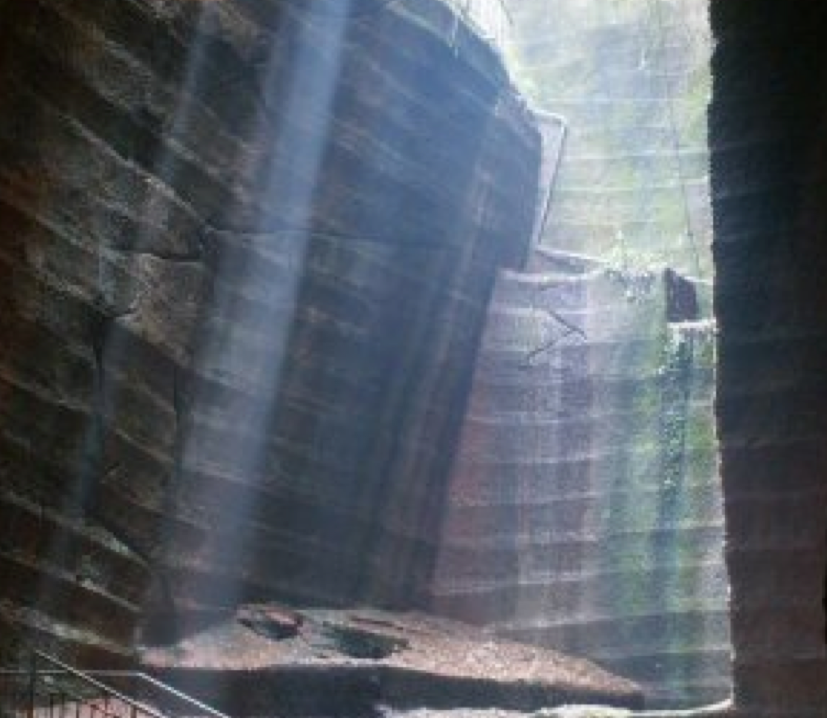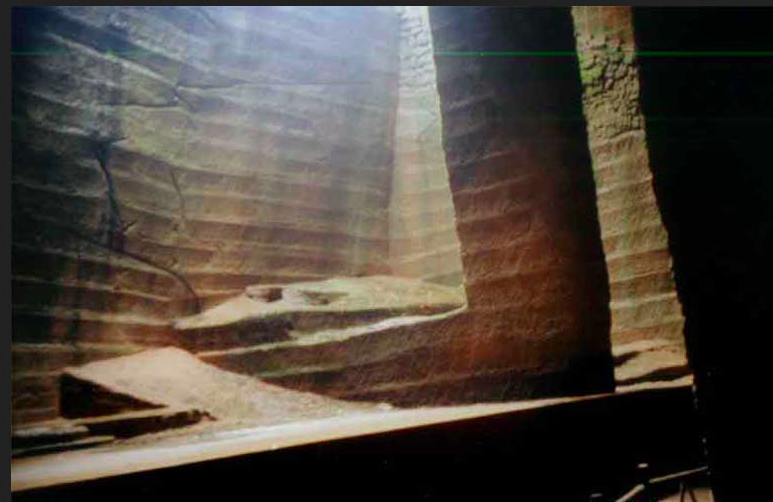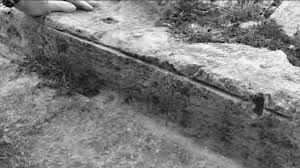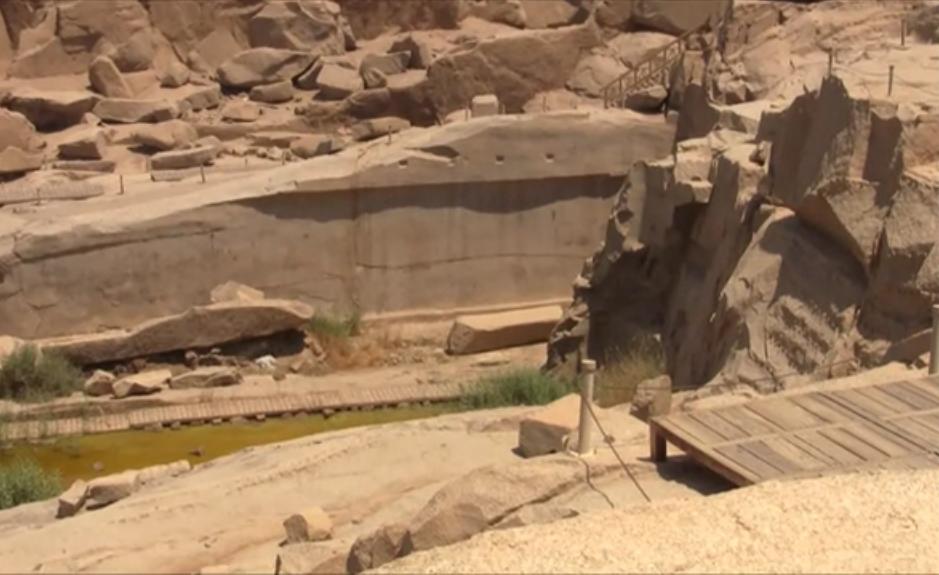It looks like you're using an Ad Blocker.
Please white-list or disable AboveTopSecret.com in your ad-blocking tool.
Thank you.
Some features of ATS will be disabled while you continue to use an ad-blocker.
share:
a reply to: JamesTB
Some of the images certainly look fascinating. However, looks can be deceiving can't they? The idea of softened stones has been around as long as I can remember and pops up on ATS at least once a year. The thing is, does the idea make any real sense? I think not.
The Incans and ancient civilisations like Egyptians used quarries and lots of them. Would they have have been cutting, pounding if they had some method of softening the stone? Another question that isn't often asked is: How would rock become softer? Would it be magical spells? Would it be advanced technology and machinery? Chemicals?
Logically, we know these diverse cultures and civilisations didn't use magic spells...or at least, we can say that magic doesn't work. Likewise, we know that they weren't using machinery because of a number of reasons...not least of which is nothing mechanical has been found from Egypt, Peru or anywhere else. They surely didn't all develop (independently and millennia apart) high-end technology without any developmental steps and then all lose every last trace of the tech, did they?
What does that leave us with? It leaves us with the explanations that the rocks were cut and shaped by conventional methods like sawing, drilling, pounding and brute-force. Some of the images are compelling enough to suggest that the conventional methods were used for unconventional (to us!) reasons.
Some of the images certainly look fascinating. However, looks can be deceiving can't they? The idea of softened stones has been around as long as I can remember and pops up on ATS at least once a year. The thing is, does the idea make any real sense? I think not.
The Incans and ancient civilisations like Egyptians used quarries and lots of them. Would they have have been cutting, pounding if they had some method of softening the stone? Another question that isn't often asked is: How would rock become softer? Would it be magical spells? Would it be advanced technology and machinery? Chemicals?
Logically, we know these diverse cultures and civilisations didn't use magic spells...or at least, we can say that magic doesn't work. Likewise, we know that they weren't using machinery because of a number of reasons...not least of which is nothing mechanical has been found from Egypt, Peru or anywhere else. They surely didn't all develop (independently and millennia apart) high-end technology without any developmental steps and then all lose every last trace of the tech, did they?
What does that leave us with? It leaves us with the explanations that the rocks were cut and shaped by conventional methods like sawing, drilling, pounding and brute-force. Some of the images are compelling enough to suggest that the conventional methods were used for unconventional (to us!) reasons.
a reply to: Kandinsky
I dunno
There are many cases around the world where we see what appears to be signs of 'Ancient Machining'. This is the crux of questioning methods for me, we don't know how those marks were made and got there. If many of those marks were done by hand as we are told [that took hours or days to do] why would the stone worker spend hours or days cutting past the point they needed by mistake?
I can see a modern saw, for example, cut past their intended mark by mistake, it would only take a split second to do, but when we find similar marking on ancient stones we are told they did it by hand which took hours or days to do.
I dunno
There are many cases around the world where we see what appears to be signs of 'Ancient Machining'. This is the crux of questioning methods for me, we don't know how those marks were made and got there. If many of those marks were done by hand as we are told [that took hours or days to do] why would the stone worker spend hours or days cutting past the point they needed by mistake?
I can see a modern saw, for example, cut past their intended mark by mistake, it would only take a split second to do, but when we find similar marking on ancient stones we are told they did it by hand which took hours or days to do.
Question:
What about grinding?
Using coarse material to smooth out shapes in and on rocks.
Mostly for the rather curvy shapes we see.
It would take a while, but then: is there a stop and start date on the depression/shape/stairs/hole, etc ? Do we know how long it took? And if it takes quite a long time, why do we expect the people that created things like this to be in a hurry?
What about grinding?
Using coarse material to smooth out shapes in and on rocks.
Mostly for the rather curvy shapes we see.
It would take a while, but then: is there a stop and start date on the depression/shape/stairs/hole, etc ? Do we know how long it took? And if it takes quite a long time, why do we expect the people that created things like this to be in a hurry?
originally posted by: eriktheawful
Question:
What about grinding?
Using coarse material to smooth out shapes in and on rocks.
Mostly for the rather curvy shapes we see.
It would take a while, but then: is there a stop and start date on the depression/shape/stairs/hole, etc ? Do we know how long it took? And if it takes quite a long time, why do we expect the people that created things like this to be in a hurry?
rock on rock and rock on rock with sand in-between was a common way to smooth stones. I've seen that demonstrated and while labour intensive works.
Maybe the ancients had fields of this plant?
If scientists analysed the soil at these quarries would they potentially find evidence for the use of acid? Or would there be no trace?
If scientists analysed the soil at these quarries would they potentially find evidence for the use of acid? Or would there be no trace?
a reply to: SLAYER69
Perhaps because the piece (the same piece we are both thinking of in Egypt) was use as base for cutting other stones, they probably continue on to complete the cutting the stone atop it and it was easier to continue cutting it than shift the stones. Another thought is that a master mason set up the saw and puts two rubes to do the manual labor and forgot to tell them when to stop!
Book idea for you Slayer; do a compilation of 'machine' stone cuts. One reason they may appear to be numerous is because people look for and note them and being stone these oops last for a LONG time. Unlike wooden ones, where I remember cutting into my base piece why manually sawing.
Perhaps because the piece (the same piece we are both thinking of in Egypt) was use as base for cutting other stones, they probably continue on to complete the cutting the stone atop it and it was easier to continue cutting it than shift the stones. Another thought is that a master mason set up the saw and puts two rubes to do the manual labor and forgot to tell them when to stop!
Book idea for you Slayer; do a compilation of 'machine' stone cuts. One reason they may appear to be numerous is because people look for and note them and being stone these oops last for a LONG time. Unlike wooden ones, where I remember cutting into my base piece why manually sawing.
edit on 27/10/14 by Hanslune because: (no reason given)
originally posted by: Blackmarketeer
A page that goes into some detail on the myths and legends of the Inca stone masons:
Lost Civilizations of the Andes
The name of the plant that allegedly 'softens stone' is Ephedra andina. It's alkaline and also a banned performance enhancing drug.
Someone posted about this a few years back here on ATS: The plant that softens stone
Perhaps the "softening of stone" is simply an allegory for the way ephedrine containing plants (one assumes from it's name) makes stone cutters work like the clappers?
a reply to: Hanslune
That's sort of why I mentioned 'unconventional reasons.' Some of the middle-of-nowhere outcrops of carved stone might have been areas for practice. They might have been similar to 'doodles' whereby workers and craftsmen could test out designs and ideas. I think we're naturally inclined to see the unusual features as having purpose when they might actually have been secondary and incidental to the final purpose.
a reply to: SLAYER69
Yeah, we've probably seen the same images although you've probably seen many more than I have. Personally, I can't manage the disconnect between what appears to have been machined with the knowledge that there were no machines. This means I accept that some appear to have been machined whilst knowing it's my own lack of knowledge that's causing me to fill in the gaps with something novel and extraordinary.
Then again, an alternative that springs to mind is that some of the ancient monuments are theatre sets placed there by who knows what? The set-designers built them and took their tools home with them. That'd be the Fortean train of thought
That's sort of why I mentioned 'unconventional reasons.' Some of the middle-of-nowhere outcrops of carved stone might have been areas for practice. They might have been similar to 'doodles' whereby workers and craftsmen could test out designs and ideas. I think we're naturally inclined to see the unusual features as having purpose when they might actually have been secondary and incidental to the final purpose.
a reply to: SLAYER69
Yeah, we've probably seen the same images although you've probably seen many more than I have. Personally, I can't manage the disconnect between what appears to have been machined with the knowledge that there were no machines. This means I accept that some appear to have been machined whilst knowing it's my own lack of knowledge that's causing me to fill in the gaps with something novel and extraordinary.
Then again, an alternative that springs to mind is that some of the ancient monuments are theatre sets placed there by who knows what? The set-designers built them and took their tools home with them. That'd be the Fortean train of thought
a reply to: Hanslune
That's why I was asking about that.
We can do it today with stone tumblers, using an abrasive agent that is harder than the rock itself. Of course a tumbler does not allow for control of the shape the rock will be, but it will certainly round it and make it smooth.
Nature does this with river rocks, although the time involved is a LOT longer than a tumbler of course.
However, if the rock's hardness (Mohs I believe is the term) is less than that of say another type of rock that has been crushed up, it would certainly work. Labor intensive of course.
That's like lime stone in a lot of caves where tourists go (Ruby Falls is a great example), of rock smoothed out over time, simply by human hands touching it. The passage walls are rather smooth compared to other parts of the passages from people simply rubbing against it as they move down the passage. It's taken a very long time since the cave was open to tourism of course, but it still is a good example of how the acid in our sweaty hands can smooth certain rocks out.
I saw this too when I lived in Italy as a teen: 500 year old buildings with stone steps, with the steps being worn down in the middle where people walk. Takes a very, very long time, but the rocks do wear and tear.
That's why I was asking about that.
We can do it today with stone tumblers, using an abrasive agent that is harder than the rock itself. Of course a tumbler does not allow for control of the shape the rock will be, but it will certainly round it and make it smooth.
Nature does this with river rocks, although the time involved is a LOT longer than a tumbler of course.
However, if the rock's hardness (Mohs I believe is the term) is less than that of say another type of rock that has been crushed up, it would certainly work. Labor intensive of course.
That's like lime stone in a lot of caves where tourists go (Ruby Falls is a great example), of rock smoothed out over time, simply by human hands touching it. The passage walls are rather smooth compared to other parts of the passages from people simply rubbing against it as they move down the passage. It's taken a very long time since the cave was open to tourism of course, but it still is a good example of how the acid in our sweaty hands can smooth certain rocks out.
I saw this too when I lived in Italy as a teen: 500 year old buildings with stone steps, with the steps being worn down in the middle where people walk. Takes a very, very long time, but the rocks do wear and tear.
a reply to: eriktheawful
Wear by countless human touch also works against metal too, which is why museums, thinking centuries ahead tell you not to touch!
A quote on grinding
Wear by countless human touch also works against metal too, which is why museums, thinking centuries ahead tell you not to touch!
A quote on grinding
But whoever it was that first invented the art of thus cutting marble, and so multiplying the appliances of luxury, he displayed considerable ingenuity, though to little purpose. This division, though apparently effected by the aid of iron, is in reality effected by sand; the saw acting only by pressing upon the sand within a very fine cleft in the stone, as it is moved to and fro. The sand of Aethiopia is the most highly esteemed for this purpose; for, to add to the trouble that is entailed, we have to send to Aethiopia for the purpose of preparing our marble--aye, and as far as India even; whereas in former times, the severity of the Roman manners thought it beneath them to repair thither in search of such costly things even as pearls! This Indian sand is held in the next highest degree of estimation, the Aethiopian being of a softer nature, and better adapted for dividing the stone without leaving any roughness on the surface; whereas the sand from India does not leave so smooth a face upon it. Still, however, for polishing marble, we find it recommended to rub it with Indian sand calcined. The sand of Naxos has the same defect; as also that from Coptos, generally known as "Egyptian" sand. Pliny, Natural History, Book 36, § 9
a reply to: Hanslune
Machine marks are very intriguing to me to say the least, Writing a book as has been mentioned quite a few times would be hard as hell to get published because quite frankly, I'm a nobody and have no backing.
So, I'll pester everybody here with my eye for the unique, ignored and bizarre.
Machine marks are very intriguing to me to say the least, Writing a book as has been mentioned quite a few times would be hard as hell to get published because quite frankly, I'm a nobody and have no backing.
So, I'll pester everybody here with my eye for the unique, ignored and bizarre.
Amazon has an easy and cheap way to self publish called "createspace' and they have E-book system for their Kindle
originally posted by: SLAYER69
a reply to: Hanslune
Machine marks are very intriguing to me to say the least, Writing a book as has been mentioned quite a few times would be hard as hell to get published because quite frankly, I'm a nobody and have no backing.
So, I'll pester everybody here with my eye for the unique, ignored and bizarre.
How about this article on plant acids used to soften stone? Would it possibly answer some questions?
PDF: Making cements with plant extracts
PDF: Making cements with plant extracts
originally posted by: AnteBellum
a reply to: JamesTB
This is a very good topic that has left me self-debating for years now.
In a lot of these cases they are simple quarry marks and the weathering, wearing afterwards causes the 'molded' effect. But this does not account for everything and I have seen(some you posted) cases that look like the stone was cast.
I hope at some point they decide to remove some of the stones temporarily to see what the hidden sides reveal. If they are smooth and tight on all sides it would strengthen this argument and maybe there would even be other identification features present hidden underneath that would give more insight.
I know what your saying but take a look at the Longyou Caves in China. They have been covered and protected from the elements and so the 'edges' look sharper.
What I find interesting is why has the rock been removed in little rectagular units?
Longyou Caves -


Aswan Quarry -

a reply to: Kandinsky
The marks I like are out in the wild, not just on statues.
Here is a mark in Peru. It's gap is exact, no variation in width/thickness of the cut.

It's as if the circular saw blade started cutting then they decided to stop right as it penetrated. Now we are to believe they chiseled it or pounding it with stone...?
The marks I like are out in the wild, not just on statues.
Here is a mark in Peru. It's gap is exact, no variation in width/thickness of the cut.

It's as if the circular saw blade started cutting then they decided to stop right as it penetrated. Now we are to believe they chiseled it or pounding it with stone...?
a reply to: JamesTB
The long bands may have been caused by their use of scaffolding. reset at different levels, look at the metal railing to get an idea of size.
The site at Aswan has excellent examples of how the 'pounders' art was done to include lots of diorite hammer stones abandoned in situ.
The long bands may have been caused by their use of scaffolding. reset at different levels, look at the metal railing to get an idea of size.
The site at Aswan has excellent examples of how the 'pounders' art was done to include lots of diorite hammer stones abandoned in situ.
originally posted by: ArmyOfNobunaga
a reply to: JamesTB
Softened stone would have led to muuuuch more stone art than what we see today. Stone sculptures would be more abundant. Heck hand impressions in stone even?
Not necessarily. The existence of nuclear power in our current world does not mean that everything that is powered is run by that power source.
Just because a technology may have existed doesn't mean that it would have been used for everything.
I'm not saying that they could soften stone, I'm just saying that your logic isn't exactly sound.
originally posted by: Hanslune
a reply to: JamesTB
The long bands may have been caused by their use of scaffolding. reset at different levels, look at the metal railing to get an idea of size.
The site at Aswan has excellent examples of how the 'pounders' art was done to include lots of diorite hammer stones abandoned in situ.
I'm not as sure about that as you are. How do you explain this gigantic cut?
Stone pounders?

new topics
-
University of Texas Instantly Shuts Down Anti Israel Protests
Education and Media: 1 hours ago -
Any one suspicious of fever promotions events, major investor Goldman Sachs card only.
The Gray Area: 3 hours ago -
God's Righteousness is Greater than Our Wrath
Religion, Faith, And Theology: 7 hours ago -
Electrical tricks for saving money
Education and Media: 10 hours ago
top topics
-
VP's Secret Service agent brawls with other agents at Andrews
Mainstream News: 12 hours ago, 10 flags -
Cats Used as Live Bait to Train Ferocious Pitbulls in Illegal NYC Dogfighting
Social Issues and Civil Unrest: 16 hours ago, 8 flags -
Nearly 70% Of Americans Want Talks To End War In Ukraine
Political Issues: 12 hours ago, 4 flags -
Electrical tricks for saving money
Education and Media: 10 hours ago, 4 flags -
Sunak spinning the sickness figures
Other Current Events: 12 hours ago, 3 flags -
Late Night with the Devil - a really good unusual modern horror film.
Movies: 14 hours ago, 2 flags -
Any one suspicious of fever promotions events, major investor Goldman Sachs card only.
The Gray Area: 3 hours ago, 2 flags -
The Good News According to Jesus - Episode 1
Religion, Faith, And Theology: 17 hours ago, 1 flags -
God's Righteousness is Greater than Our Wrath
Religion, Faith, And Theology: 7 hours ago, 0 flags -
University of Texas Instantly Shuts Down Anti Israel Protests
Education and Media: 1 hours ago, 0 flags
active topics
-
Nearly 70% Of Americans Want Talks To End War In Ukraine
Political Issues • 33 • : andy06shake -
Sunak spinning the sickness figures
Other Current Events • 11 • : McUrnsalso -
Any one suspicious of fever promotions events, major investor Goldman Sachs card only.
The Gray Area • 6 • : ImagoDei -
University of Texas Instantly Shuts Down Anti Israel Protests
Education and Media • 1 • : PorkChop96 -
Reason of the Existence
The Gray Area • 20 • : belkide -
Black mirror, what happened.
Television • 20 • : seekshelter -
God's Righteousness is Greater than Our Wrath
Religion, Faith, And Theology • 25 • : andy06shake -
Russia Ukraine Update Thread - part 3
World War Three • 5730 • : Arbitrageur -
VP's Secret Service agent brawls with other agents at Andrews
Mainstream News • 43 • : Hakaiju -
Everest-sized ‘Devil comet’ Pons-Brooks Visible Now
Space Exploration • 17 • : Compendium
